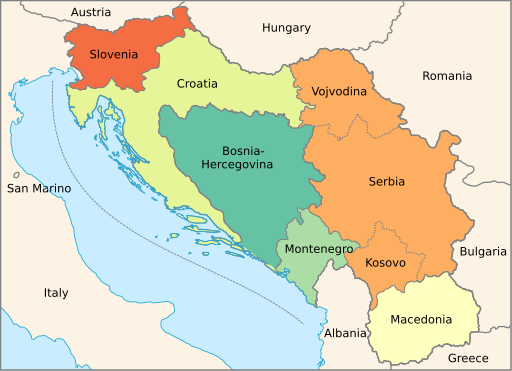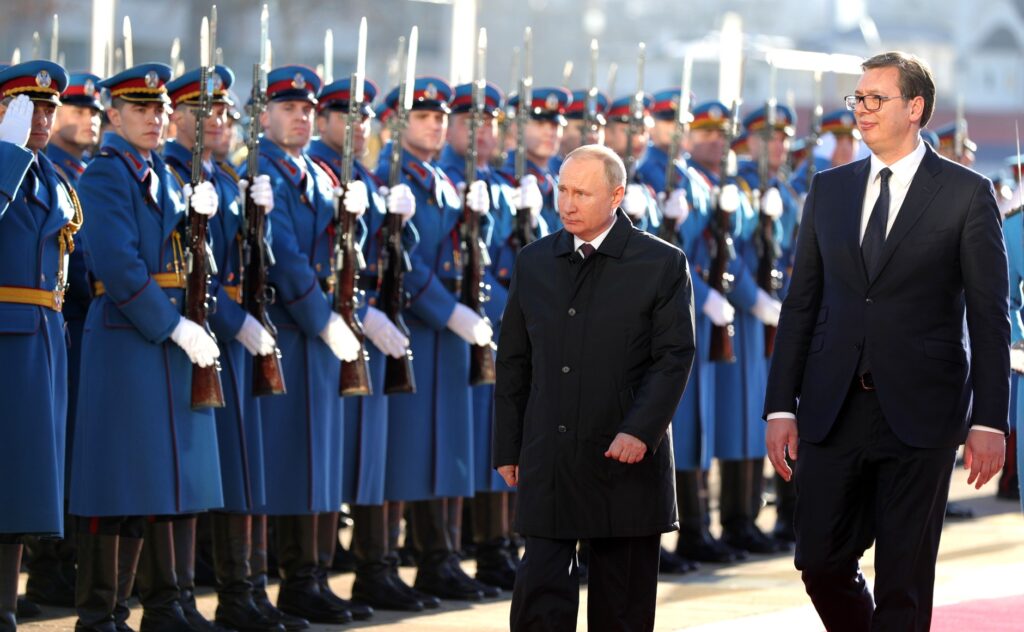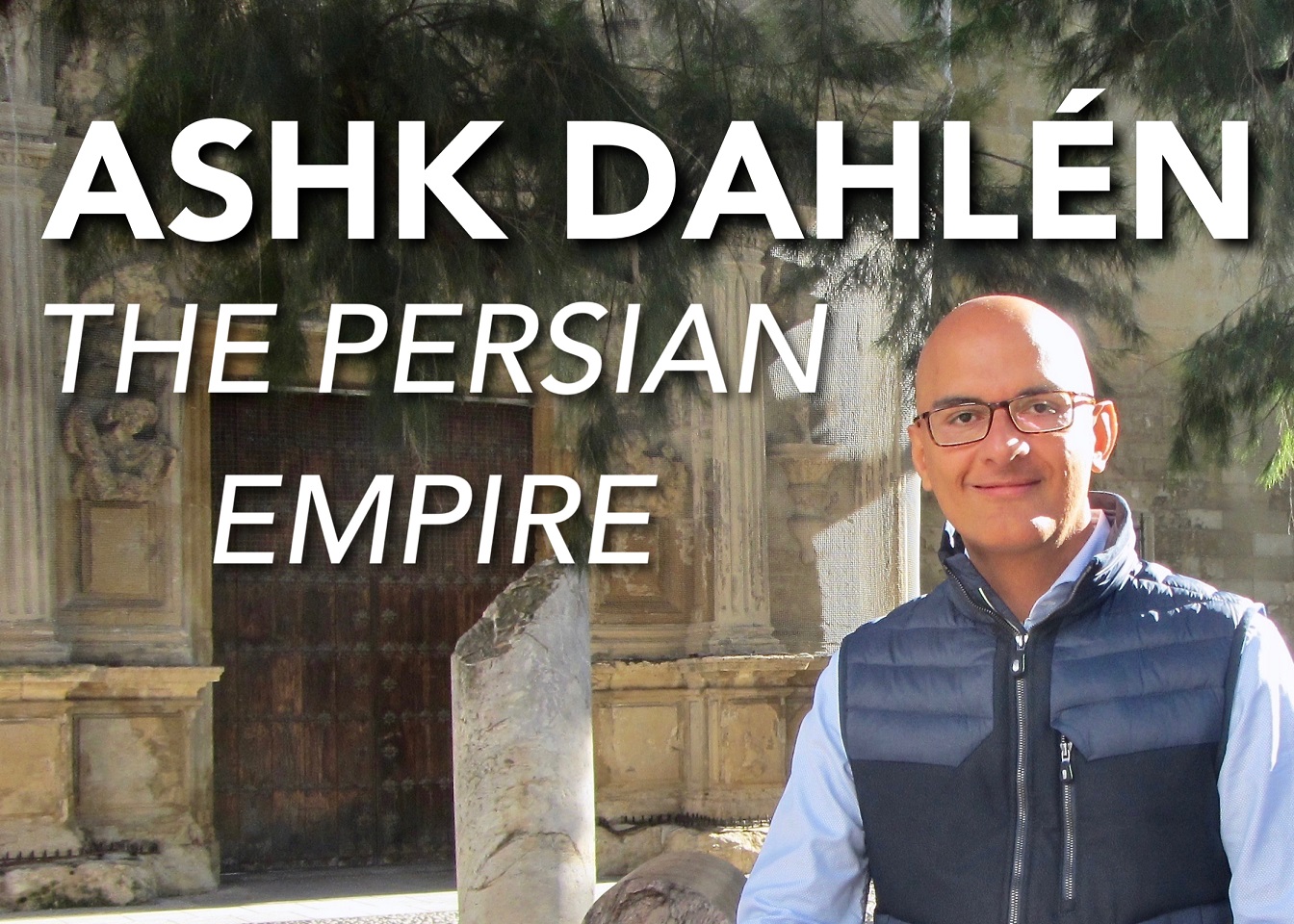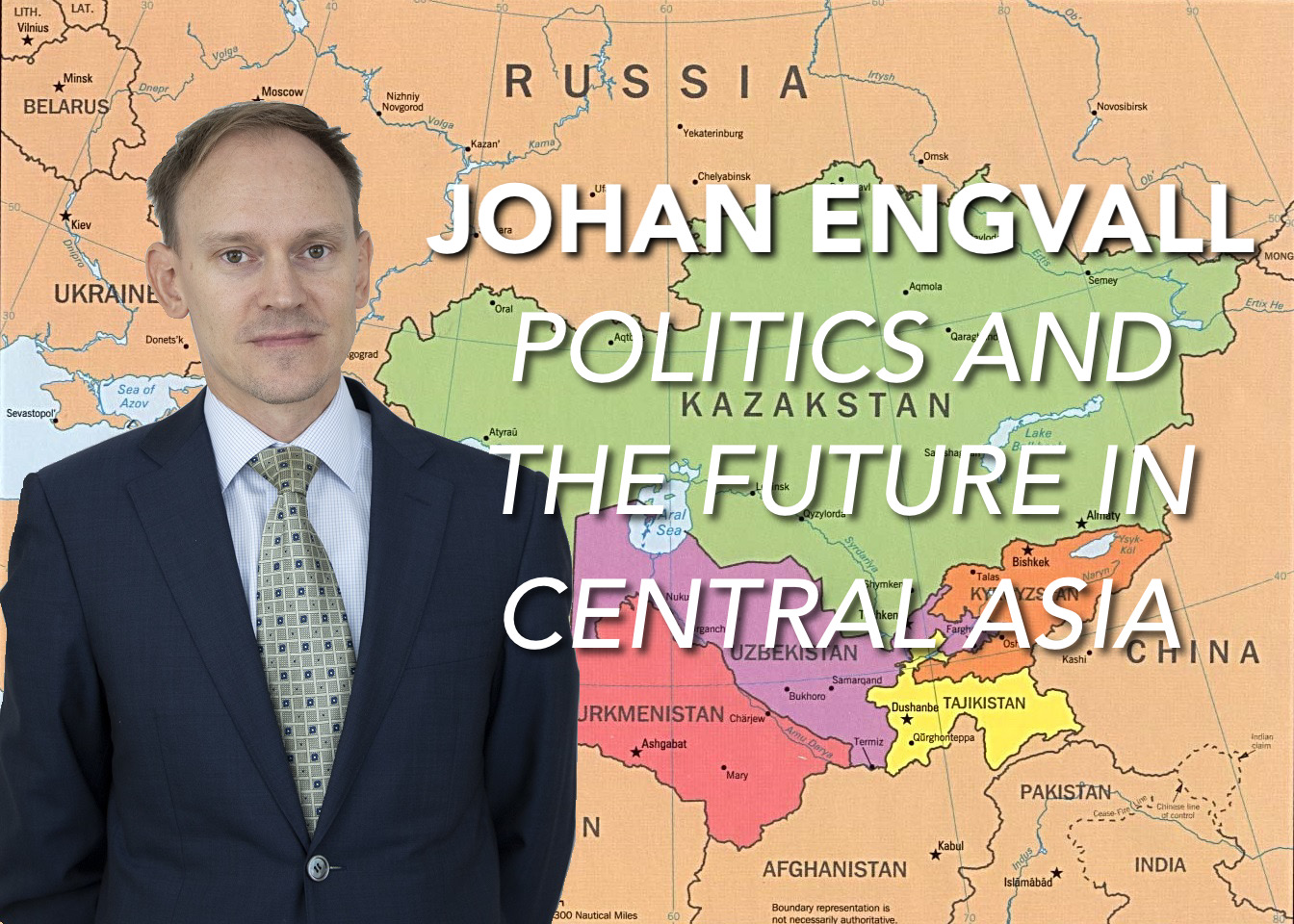This interview was conducted in February 2023 and has been edited for brevity and clarity.
Vill du istället läsa artikeln på svenska? Klicka här!
About Sanimir Resić
Sanimir Resić is a Swedish historian who was born in 1964 in the city of Split in then Yugoslavia and moved to Sweden with his family at the age of two. In 1998, he started teaching about the history of the Balkans at Lund University, and the following year he defended his doctoral thesis in history with the dissertation “American Warriors in Vietnam“. Resić has held several roles at the university, such as prefect, university lecturer, associate professor, assistant dean, and dean. His most well-known works for the public are “Balkans historia: Jugoslaviens uppgång och fall” (The History of the Balkans: The Rise and Fall of Yugoslavia) (2006, fifth edition published in 2018) and “Jugoslaviens undergång: krigen, freden, framtiden 1991-2017” (The Fall of Yugoslavia: The Wars, Peace, Future 1991-2017) (2018).
The analysis of the Balkans and former Yugoslavia often looks different depending on whether you are speaking with a Croat, Serb, or Bosnian. Therefore, the first question needs to be what background you have and how it shapes your view and analytical ability of this complex subject?
– I completely agree with the premise. Over the almost 25 years I have been teaching this subject, students often start with that question right away. My colleagues who teach in other subjects rarely get asked about their roots. I come from what is usually referred to as a “mixed marriage.” My father was Bosnian, a secularized Bosnian Muslim, not particularly religious. My mother was born a Catholic in Italy to an Italian mother and a Croatian father, or Dalmatian, as he described himself.

– When some people hear this, they quickly conclude that I speak for the Bosniaks or that I speak for the Croats. But I have developed a method for when I teach and write, where I do my best to cut away any feelings and stick to the matter at hand. An example is occasions when students with a Serbian background have begun to defend war crimes in Kosovo. Then I have pointed out to them that it is about people who killed civilians in your name, such as Arkan who was behind terrible war crimes. It should bother you more than the fact that it has been exposed. Why do you do this to yourself?
– Another example is when I gave a lecture on corruption and organized crime, in which unfortunately many Albanians are involved. An Albanian exchange student from Kosovo became extremely upset, claiming that I was smearing Albanians. I did my best to explain that I am not making this up. This information comes from reliable sources, such as Interpol, Europol, and reports from the EU Commission. He just turned and left. We can all get stuck in emotionally biased positions at times, and it’s important that others point out when it seems to be an emotional blockage rather than an objective stance.
“My father was born in that very town where this happened. I would be emotionally detached if I were not affected by this fact.”
– I am not immune to being emotionally affected either. There’s a specific day, May 31st, called White Armband Day to remember the massacre in the Bosnian town of Prijedor. It was on May 31st, 1992, that the Bosnian Serbs ordered all non-Serbs, mostly Bosnian Muslims and some Croats, to wear white armbands and hang white flags on their homes, allegedly for their safety. However, it turned out to be the opposite. All houses with white flags were burned, and people with white armbands were either beaten, raped, murdered, or placed in concentration camps. My father was born in that very town where this happened. I would be emotionally detached if I were not affected by this fact. Therefore, I never delve too deeply into this event, and I prefer to consult my colleagues when I need to cover it in my teaching. But again, it’s not something I made up, and I would never convey information that I cannot trace to its source.
Could you give an introduction to the countries and ethnic groups we talk about when we mention former Yugoslavia and the Balkans?
– We are talking about the states that emerged after Yugoslavia disintegrated following a series of wars from 1991 to 1999. These include Slovenia, Croatia, Bosnia and Herzegovina, Serbia, Montenegro, and North Macedonia as it is formally known. There’s also the question of Kosovo. Kosovo declared independence in 2008, but it wasn’t approved by the UN Security Council due to Russia’s veto. Additionally, five EU countries have not recognized Kosovo’s independence, including Spain, which is keen to avoid setting a precedent that could lead to Catalonia’s independence.
– Before 1991, these countries were part of a socialist federation consisting of six republics and two autonomous provinces. These are essentially the same as the aforementioned successor states, with the exception that the two autonomous provinces were Vojvodina, which is now the northern part of Serbia, and Kosovo. When speaking with a Serb, you might notice that they more accurately refer to the area as Kosovo and Metohija. This is a small but relatively significant detail. Metohija comes from the Greek word for monastery land, and there are still monasteries and churches from the 13th century in that region. They are protected by international troops to prevent revenge actions and destruction.

– Looking further back in history, two empires played a massive role here: the Austro-Hungarian Empire and the Ottoman Empire. The first Yugoslavia was created as a result of the end of World War I when both the Austro-Hungarian and Ottoman empires collapsed. The country was initially named the Kingdom of Serbs, Croats, and Slovenes, and it included ethnic groups that had fought against each other during World War I. The foundation was thus not very strong. Slovenes and Croats were Catholics, while Bosnia had Catholics, Muslims, Orthodox, and Jews, and Serbia, Montenegro, and North Macedonia were predominantly Orthodox Christianity. A rich mixture of religions and ethnic groups, to say the least. But they all share one thing, and that is that this region has been at war for about 2000 years. There was an American historian who calculated that today’s North Macedonia is the place in the world where the most armies have marched through, over the millennia.
– It is, therefore, not wrong to say that they were already facing odds from the beginning. For example, Croats were never interested in being part of a state with Serbs, but they didn’t have many alternatives and had to accept it. A significant Serbian minority already lived in Croatia since they fled during the Ottoman invasion. In 1929, the name changed to Yugoslavia, and a decade later, another world war broke out. Croats then decided that they did not want to be part of the same kingdom as Serbs, with Belgrade as the capital and a Serbian king on the throne. They became a puppet state under Italy and Nazi Germany during the war, although most Croats were not fascists or involved in mass killings and the Holocaust. In any case, this created a very strong stigma for surviving Croats.
“The central questions revolved around whose land this really was and who was here first.”
– In Bosnia, as mentioned, the three religions had coexisted since the Middle Ages. Since there was no majority ethnic group, but instead three ethnic groups, it made things even more complicated. Kosovo, which is still conflict-ridden today, is the place that Serbs see as their cradle, both physically and mythically. Serbs were forced out of there during Ottoman rule, and since then, they have sporadically regained control of the area. Today, Albanians see themselves as the indigenous people, referring to the Illyrians who lived there 2000 years ago. The question of who was in a certain place first is not entirely unimportant in the Balkans, but unfortunately, it overlooks the fact that ethnic groups have been mixing all over Europe since ancient times. Mandatory DNA tests for people in the Balkans might not be a bad idea to show them how pointless some of these disputes and polemics actually are.
When socialist Yugoslavia collapsed in 1990, after the various countries voted in referendums to leave the federation, over two hundred parties were formed. This happened after decades of a one-party system. I would estimate that around 90% of all new parties had some form of ethnic or nationalist focus. The central questions revolved around whose land this really was and who was here first. Serbs believed that Serbia was where Serbs lived. This applied, for example, to the third of Croatia where the country’s Serbian minority had long been the majority. For all groups, it was largely about trying to retain the piece of land they possessed and the one they believed they had the moral and historical right to possess. Serbian President Milosevic was not particularly interested in Slovenia since no Serbs lived there. However, he had a much greater focus on the aforementioned parts of Croatia and Bosnia, where Serbs constituted a little over a third of the population. It was in these areas that the war and fighting between 1991 and 1995 were most intense and brutal.
How do people today view the idea of a united Yugoslavia? Does some kind of Yugoslav identity remain?
– There is something called Yugo-nostalgia, but it mainly concerns music, film, and literature. The idea of building a Yugoslav identity was what Tito and the socialist party sought after. The basic idea in 1943, when the new socialist Yugoslavia was formed in the middle of World War II, was precisely that one would be Yugoslav first, which made other ethnic and religious affiliations secondary. But certainly, there is a slice of Yugo-nostalgia. I still have old colleagues who have kept their youth stories about the beautiful, socialist Yugoslavia. But no matter how you twist and turn it, it was still a socialist dictatorship. If you said the wrong things, you could end up in prison or on Barren Island, a kind of Yugoslav gulag.

My experience is that it doesn’t take long before you encounter conspiracy theories when you are in the Balkans. One I’ve heard is that the Muslims who are said to have been murdered in Srebrenica later appeared in other countries where they live a luxurious life. Do you agree that conspiracy theories are frequently occurring?
– That’s exactly right. The conspiracy theories are very strong in the region, and the fact is that one is sometimes well aware that it is a lie. It’s the same thing we now see Russia doing, and they know very well what they are doing even if they deny it. Srebrenica, which you mention, is the subject of many conspiracy theories. An example is that corpses were brought from other places so that there would be so many. The fact is that the war in Bosnia began with the Serbs, and to some extent the Croats, claiming that a Muslim state was being formed in the middle of Europe – a European Iran. They distorted the truth and didn’t mention that around 90% of the Muslim population in the area was secularized. Unfortunately, some people start to believe them in the end, and it doesn’t help how much you show that it can’t be true.
You talk about the different religions that occur in these countries. Often the religions are pointed out as the basis for the conflicts between ethnic groups. Do you agree that this is the case, or is it too simplistic an analysis?
– It is an oversimplification, even though it’s not irrelevant. However, there used to be a theory that it was a war between Christians and Muslims, and that is entirely wrong. But one cannot deny that religion is important. There are surveys that show that previously around 30-40% of Croats had a Catholic identity. Today, it’s around 97%. It’s virtually impossible to be a Croat without also being Catholic. It has become synonymous. Corresponding surveys in Serbia have shown that the proportion of religious people has increased from around 10% to today’s 80-90%. Unfortunately, a very black-and-white history has been presented where religion is used as a bastion. But the matter is actually much more complicated and full of grey zones.
“I can’t imagine a Serbian politician winning an election and at the same time saying that we accept Kosovo’s independence.”
How big is the risk of a new outbreak of war?
– The risk has always been present. Neither Bosnia nor Kosovo are resolved issues. It’s the classic Gordian knot. The peace agreement known as the Dayton Agreement, signed in Paris in 1995, effectively acts as a constitution to ensure that the three major ethnic groups have their rights. It has created enormous division and it’s incredibly difficult to get anything done in Bosnia with these three ethnic groups having special interests. There are still many Croats and Serbs who believe it would have been better to have simply divided Bosnia between them. The good thing about ending the war in 1995 is thus causing us problems today. Progress hasn’t been made to any notable degree.
– Kosovo is a phenomenon where NATO even intervened and stopped the Serbian ethnic cleansing of Albanians. But today the situation is reversed. It’s now the remaining Serbs who fear for their lives and their artifacts. I can’t imagine a Serbian politician winning an election and at the same time saying that we accept Kosovo’s independence. And yet, this is a requirement from the EU, and Serbia is an applicant country. The region is unfortunately riddled with Gordian knots.
Can you give us a base case scenario and a worst-case scenario for the situation in the former Yugoslavia in 10 years?
– In a best-case scenario, all the countries in the area are members of the EU. The writing of history has been left to historians who do their utmost to stick to source material and objective resolution of issues. They have realized that Europe is small and everyone depends on each other. A good example to look at is the relationship between Germany and France. Who would have thought a hundred years ago that they would become such good friends? That’s European development at its best.

– In a worst-case scenario, we have ended up in a state, which unfortunately we see more and more often, where wars do not end. Look at Cyprus, Palestine, Korea, Taiwan, Libya, Syria. We’re talking about decades where it just continues. That’s a worst-case scenario for me. A Southeast Europe where conflicts are spreading. Because there are many other ethnic groups with tense relationships in that part of Europe. Take for example the relationship between Turks and Greeks, or Bulgarians and Turks. Unfortunately, there is a lot of problematic situations that could be awakened from their slumber.
What does the cultural and historical connection between Russia and Serbia look like?
– First, there’s a linguistic connection. The South Slavic languages are closer to Russian than the West Slavic languages. Macedonians, Bulgarians, and Serbs have no problem learning Russian. I myself studied Russian at school and had no problem getting top grades. A thousand years ago there was a Slavic language. Looking at history, I would say that in the relationship between Serbia and Russia, the Russians have benefited considerably more than the other way around. Perhaps with the exception of the First World War which was a disaster for Russia by siding with Serbia. Montenegro’s accession to NATO was a slap in the face for Russia. Montenegro had since the 18th century been Russia’s little darling. One should be aware that even though Russia talks about a Slavic brotherhood, it’s clear that only the Orthodox fit in. Slavs who are Catholics or Muslims have no place in this friendship.
What book should everyone read?
– Then I would recommend the American medieval historian John Fine and his book The Bosnian Church (2007). The issue of the Bosnian Church has been at the root of many battles and nationalistic interpretations since the mid-19th century. Fine has done a very source-critical analysis and massive effort to prove once and for all that the third Bosnian Church, alongside the Catholic and Orthodox, was not Bogomil or Cathar. It was an independent Bosnian Church that quickly disappeared after the Ottoman invasion in the mid-15th century.
If you liked this article, you should probably also check these out:

